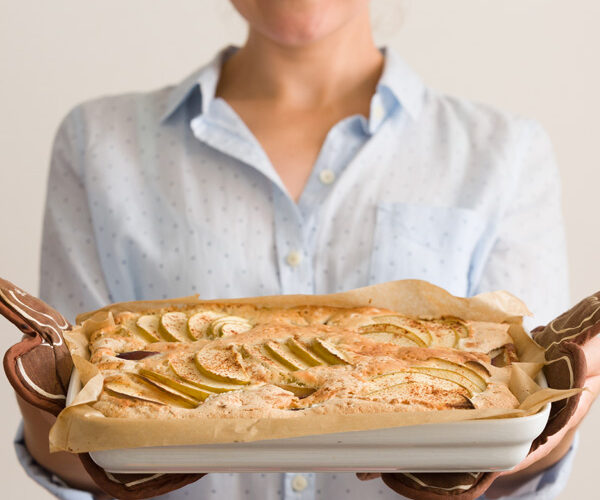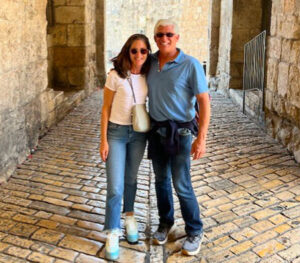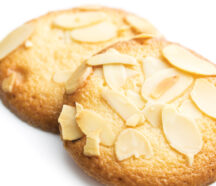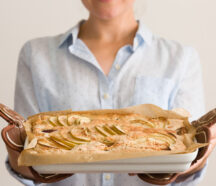A Chometz Burning Tradition
in Baltimore
The burning of the chometz (food product made from wheat, barley, rye, oats, spelt or their derivatives that has leavened, which is forbidden to eat on Passover) is a tradition that brings thousands to northwest Baltimore every year for Passover. Beginning in 2010, families arrived at the Glen Avenue Fire Station parking lot on the eve of the Passover Seder to participate in this tradition, throwing their leavened muffins, bagels, breads, cereals, cakes and other products into large drums on with fires burning inside them.
In 2008, when it became apparent that the Jewish community was expanding and the parking lot could no longer hold the number of people attending the chometz burning, Betsy Gardner, City-Wide Jewish Community Liaison for City Council President Bernard C. “Jack” Young, looked around the community to identify a location that people could safely drive to and that would be open enough to accommodate the community’s needs.
After driving around the community she identified that Pimlico Race Course Clubhouse Parking Lot could not only safely accommodate the community’s needs, but that that it would foster a partnership between the community and the Race Course.
Since 2009 Maryland Jockey Club and their staff have welcomed Baltimore’s Jewish community to use their Clubhouse Parking Lot for the Chometz Burning, and they provide staff to assist throughout the day.
In 2013, after witnessing all the unopened/unused food being discarded and thrown away Gardner came up with the idea to have CHAI: Comprehensive Housing Assistance Inc. and Park Heights Renaissance partner to open a food pantry at the Towanda Community Center. There, the unopened, nonperishable food donated would stock its shelves and provide food to families in need. It would also build a stronger relationship between residents of Southern and Northern Park Heights.
Although Towanda Community Center’s food pantry is no longer in existence, the food donations from this year will be donated to families in need through food banks and churches in the area.
Chometz 101
The Torah defines chometz as any mixture that contains flour and water that has been allowed to rise. When dough rises, it undergoes a process called “leavening.” Whenever bread is baked, the dough is allowed to rise for at least an hour or two in order to improve the taste, texture and volume. Once it has begun to change, it becomes leavened bread. In Hebrew, this is called chometz.
If you mix such with water, and leave it undisturbed, under optimum conditions it will become chometz in eighteen minutes. If, however, the flour touched hot water or salted water, it becomes chometz instantly. Adding yeast to the dough makes it rise immediately, and more efficiently, since yeast is one of several substances that are called a “leavening agent.”
Also, if flour touches water that is mixed with another type of liquid, it becomes chometz instantly. Ironically, things like apple juice cannot cause flour to ferment, but apple juice mixed with water causes the mixture to ferment and become chometz instantly. However, if the dough is completely baked before it begins to rise, it is called “matzah.”
Not all grains can actually rise that way. The Torah defines five types of grain that can become chometz when mixed with liquid: grain: wheat, spelt, oats, barley, rye or any of their derivatives. (Those are also the only five types of grain from which we may make Passover matzah to eat the first two nights of Passover.)
During the entire holiday of Passover, it is forbidden to own, eat or handle chometz in any way. It is even forbidden to drive any benefit from chometz during Passover, such as making profit from it, using it for fuel or feeding it to your animals. Any benefit whatsoever is forbidden during Passover.
The source for the custom of burning chometz is from the Torah (written law) and Mishna (oral law). The Torah in Exodus 12:15 states: “For a seven days you shall eat matzas, on the first day you shall nullify the leaven from your homes, anyone who eats leavened food, that soul shall be (spiritually) cut off from the Jewish people – all seven days (eight days outside of Israel).”
The Mishna in Pesachim Chapter 2:1 relates the dispute: Rebbe Yehuda states that the only way to destroy chometz is by burning. The Sages state that even by crumbling it up and tossing it into the wind or by crumbling it up and throwing it into a body of water of water (is effective).
One can understand that chometz (leavened bread) and matza (unleavened bread) are opposite forces. There are a number of metaphors relating this concept. On a national level, the Passover holiday and Hagaddah document is a re-enactment of the story told at the Pesach Seder which is the transition of the Jewish nation from slavery to freedom. On a personal level, bread because is rises from the yeast ingredient and becomes filled with air represents ones ego while matza which is plain and thin represents humility. To re-experience the transition from slavery to freedom in various life situations, arrogance should overcome humility.
Matza is food for the soul that nourishes the yetzer tov (impulse to be or do good) and chometz nourishes the yetzer hara (the self-destructive impulse) during the days of Passover. When a person is no longer controlled by their desires, they become spiritually free to make the best possible decisions in life. Therefore, the burning of chometz represents ones seeking to overcome arrogance, to become more humble human beings and to be more in touch with one’s spiritual self.
Subscribe to our newsletter
The Associated is a home for everyone in the Baltimore Jewish community. We offer several email lists to help people find a community, engage with their peers and support Jewish journeys around the world.
Join Our Mailing ListAdd Impact to Your Inbox
Sign up for our newsletter
Subscribe to our newsletter
The Associated is a home for everyone in the Baltimore Jewish community. We offer several email lists to help people find a community, engage with their peers and support Jewish journeys around the world.
Join Our Mailing List









 Please Wait while we loading your video.
Please Wait while we loading your video.